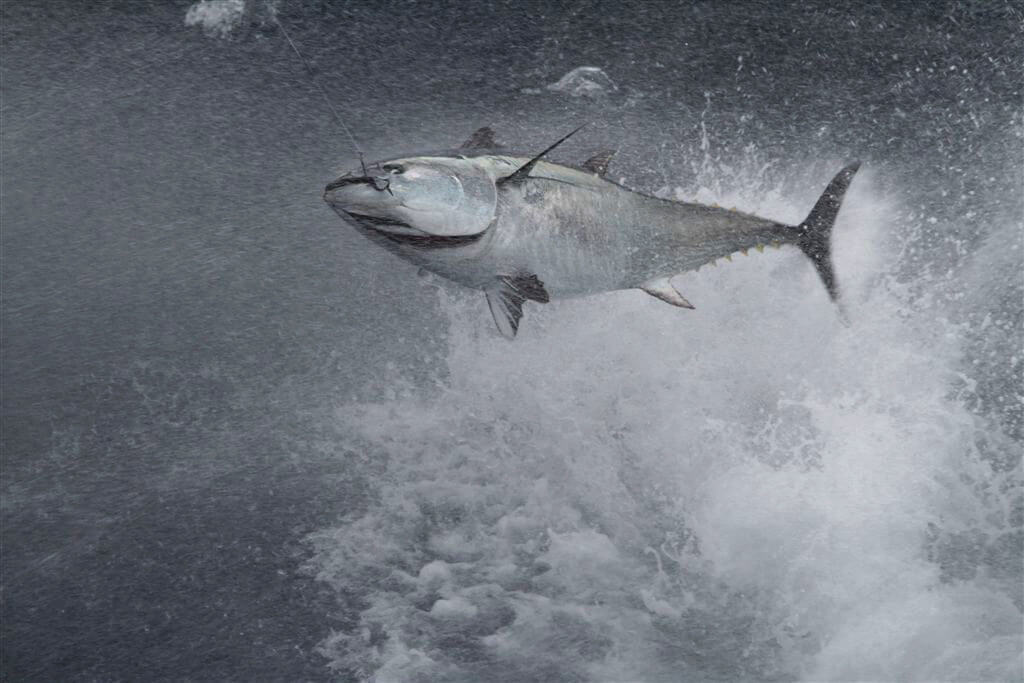AZTI has developed a genetic method to identify the origin of bluefin tuna specimens, to improve the management and promoting the conservation of the species
Últimas noticias
Una mirada LGTBIQ+ al reino animal
Circular Economy in Action: Valorisation of By-products through Projects like PRIMA NEWFEED
Strategic Perspectives: Highlights from the Food4Future World Summit for Business Leaders
- The technology centre has coordinated this research that enables the development of a pioneering tool to discover the origin of the specimens of this species for an improved management and sustainability.
- The results of the study, led by AZTI researchers, Naiara Rodríguez Ezpeleta and Haritz Arrizabalaga, have been published in the prestigious scientific journal, Frontiers in Ecology and the Environment.
- The study has been developed by an international consortium composed of partners from Africa, Asia, America and Europe.

Sukarrieta, 29 August 2019.- A genetic birth certificate to identify the origin of bluefin tuna. This has been one of the main achievements of the international research coordinated by AZTI, which has enabled the development of an advanced tool to determine where the Atlantic bluefin tuna specimens come from, which will contribute to the sustainability of the species.
“Atlantic bluefin tuna is a very important fishery resource, which had been seriously overexploited until a few years ago and which is still under threat of overfishing and illegal trafficking. Our research has provided an accurate, cost-effective and non-invasive tool for tracing the genetic origin of bluefin tuna specimens”, assures the head of the study,
Naiara Rodríguez Ezpeleta.
The system developed improves the evaluation of the bluefin tuna populations as it allows to determine the origin of the individuals that are fished regardless of their catch location.
The Atlantic bluefin tuna consists of two populations: the specimens of the east, born in the Mediterranean and returning there for reproduction, and those of the west, born in the Gulf of Mexico and also returning to their place of origin for spawning. This second population is less abundant and requires greater protection. Despite being genetically different, the appearance of individuals from both populations is identical. For this reason, the use of genetic tools that enable identifying the origin of each specimen is key to improving the management of bluefin tuna stocks, optimising the results of the adopted management measures and more accurately defining the fishing quotas, which do not affect the eastern and the western tuna the same way.
“Knowing how much of each population is fished is an essential requirement for an effective evaluation and management of bluefin tuna populations. Up to now, this was not possible, but this new tool enables to determine the origin of the tuna captured in the Atlantic (mixing area). The main challenge for our study was to gather all required biological samples to develop the genetic markers, a task for which coordinating an international consortium composed of partners from Africa, Asia, America and Europe was necessary “, adds the researcher.
The tool generated within the framework of this research is based on the analysis of more than 600 larvae, young of the year and spawning adults collected in the main spawning areas of the species, a very high number given the difficulty of obtaining larvae and young bluefin tuna. More specifically, tens of thousands of markers distributed in the bluefin tuna genome have been discovered, of which around one hundred were selected for the origin diagnosis. This tool has been applied to study the origin of one thousand adult tuna caught throughout the Atlantic.
“Our objective is to offer responses to the need of better managing a resource that was in a critical situation up to now. We have tried to resolve the need to correctly determine the origin of each of the large tuna populations, that of the Mediterranean and that of the Gulf of Mexico, which do not mix with each other for breeding but do come together in the sea and have the same appearance, so genetic identification is the only way of distinguishing them”,
adds the expert in marine research.
The study, “Determining natal origin for improved management of Atlantic bluefin tuna”, has also genetically demonstrated that the bluefin tuna returns to its place of birth following several years of transatlantic migrations.
The research, which has been published in the prestigious scientific journal, Frontiers in Ecology and the Environment, has been funded by the “Atlantic Wide Research Program for Bluefin Tuna”, launched by the International Commission for the Conservation of Atlantic Tunas (ICCAT) and within the framework of which AZTI has coordinated a large part of the biological studies since 2011.
The study has also relied on the support of the Basque Government’s Department for Agriculture, Fisheries and the Food Industry through the GENPES project and the Spanish Government’s Ministry for Science, Innovation and Universities, through the ACEITUNA project.







